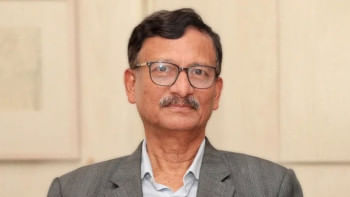Familiarising the mainstream with Adivasi culture
An accomplished Nazrul Sangeet artiste, Zannat-E-Ferdousi, is devoted to another cause as well. Ferdousi has been working as the director of advocacy at Research and Development Collective (RDC) for the last five years. Among the organisation's concerns are studies on the 'Adivasi' (indigenous) communities in Bangladesh, advocacy of their land rights and familiarising the mainstream culture with their traditions. Cultural Coordination Centre, Bangladesh -- a sister organisation of RDC -- deals with the last subject. Ferdousi is the general secretary of the organisation.
"According to Bangla-deshi Adivasi Forum, there are at least 45 Adivasi communities in the country," says Ferdousi. "Naturally they have vibrant cultural traditions. However, except for a few, most of the Adivasi communities don't have apposite representation and exposure in the mainstream," she adds. "For the last three years, Shammilito Shangskritik Jote, Padatik and Bashonto Utshab Committee have been incorporating performances by Adivasi artistes in their programmes.
"There are 14 Adivasi festivals/ celebrations in Bangladesh that can be considered major. Among these is the New Year celebration, which the Chakmas call 'Biju' and Marmas/ Tripuras call 'Baisabi.' Santals and Ora(n)os celebrate 'Karam Utshab' during 'Chaitra Shangkrani' (last day of spring). Santals also have 'Baha Parab' or spring festival. Byoms have a splendid dance to usher in spring. Manipuris commemorate 'Dol Purnima.' Ora(n)os have 'Phagoa Utshab' and so on.
"Representation-wise, the Garo community is perhaps the biggest in Dhaka. Exposure-wise, Manipuris, Chakmas, Garos and Tripuras are advanced. There's an issue of disparity between the Adivasis living in highlands and those living in the plains. Despite having vibrant cultural traditions, Santals, Malos, Bagdis and Ora(n)os living in the northern part of our country don't get enough exposure.
"There's another issue related to religious conversion among Adivasi communities that are marginalised. Members of several Adivasi groups have been converting to Christianity and during the initial phase they were undecided on continuing their traditions and rituals that the local church declared 'Shaman' or 'un-Christian'; the 'Wanggala' festival of Garos, for instance. Fortunately, now they are becoming more aware of their roots and identity and 'Wanggala' celebration is back."
"Something refreshingly positive about these Adivasi celebrations, that I've noticed, is the participation by all, regardless of age. Even the oldest among them join in singing and dancing. Music and dance are ingrained in all Adivasi festivals," Ferdousi says.
Disconcerting issues: Despite the popular impression that Adivasi women enjoy social freedom, they face four types of discrimination, whereas women in the mainstream face three, according to Ferdousi. "Adivasi women also get paid significantly less than their male counterpart for their labour," she says.
Ferdousi also feels not much is being done to preserve and promote the Adivasi cultural practices by the state. "There are 'Upojatiya Cultural Academies in our country but I don't think they are effective. First of all, I have issues with the term 'Upojatiya,' which means tribal. You're dehumanising someone when you refer to him/her as 'tribal.' Then there is the concern of recruiting Bengali teachers/ trainers at these academies. Isn't it logical to have Adivasis as trainers when grooming of Adivasi cultural practices is concerned? These academies can also play a key role in teaching Adivasi children their mother language," she says.
On the occasion of International Women's Day, RDC is holding a seminar on "Bangladesh-er Shonkhyalaghu Nari: Adivasi O Cha-sromik" on March 14, says Ferdousi. Human rights activist Sultana Kamal and Nirola Thompson, a Khasi minister and vice-president of Bangladesh Adivasi Adhikar Andolan, are expected to speak at the seminar.

 For all latest news, follow The Daily Star's Google News channel.
For all latest news, follow The Daily Star's Google News channel. 



Comments